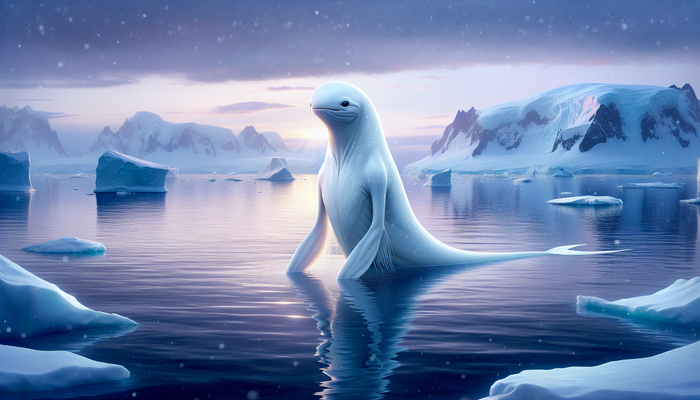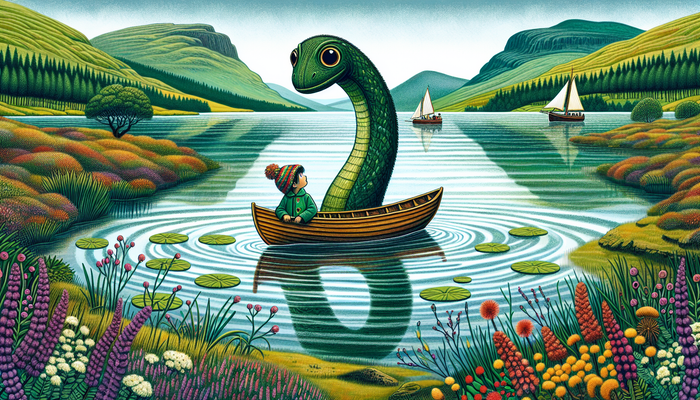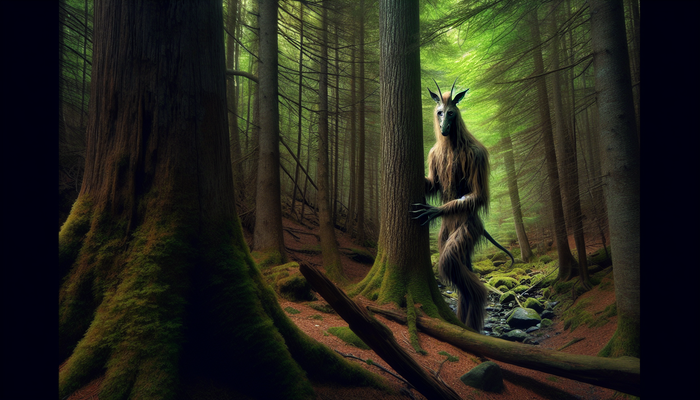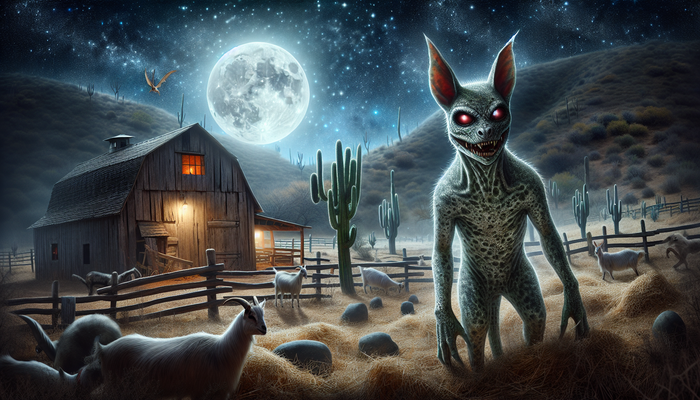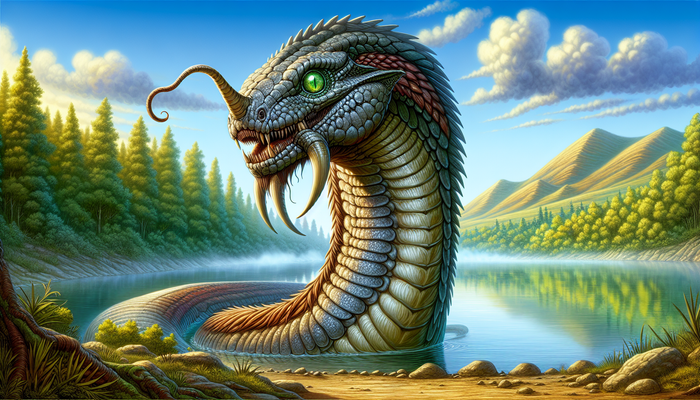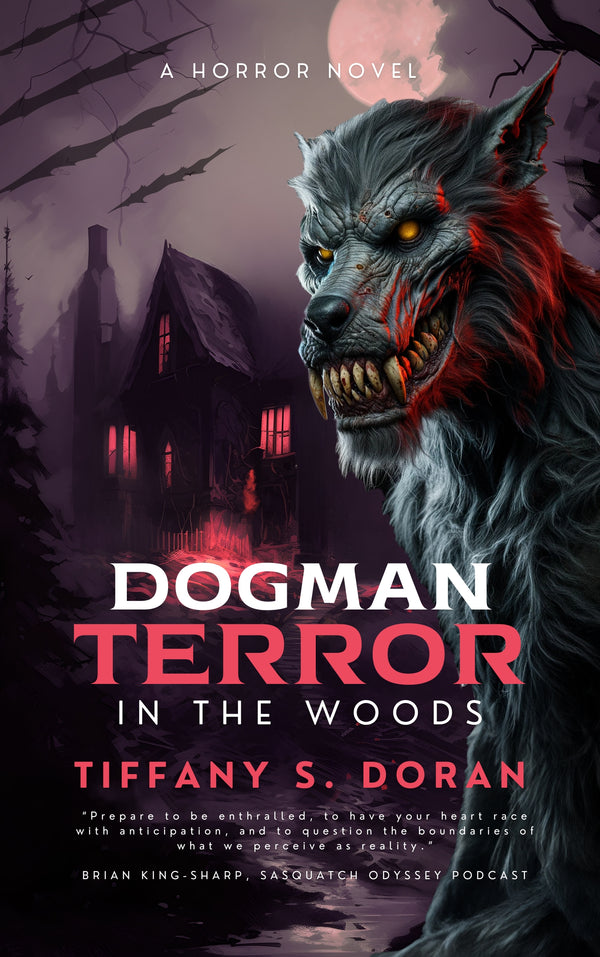Exploring Different Cryptids: Unraveling the Mysteries of Legendary Creatures
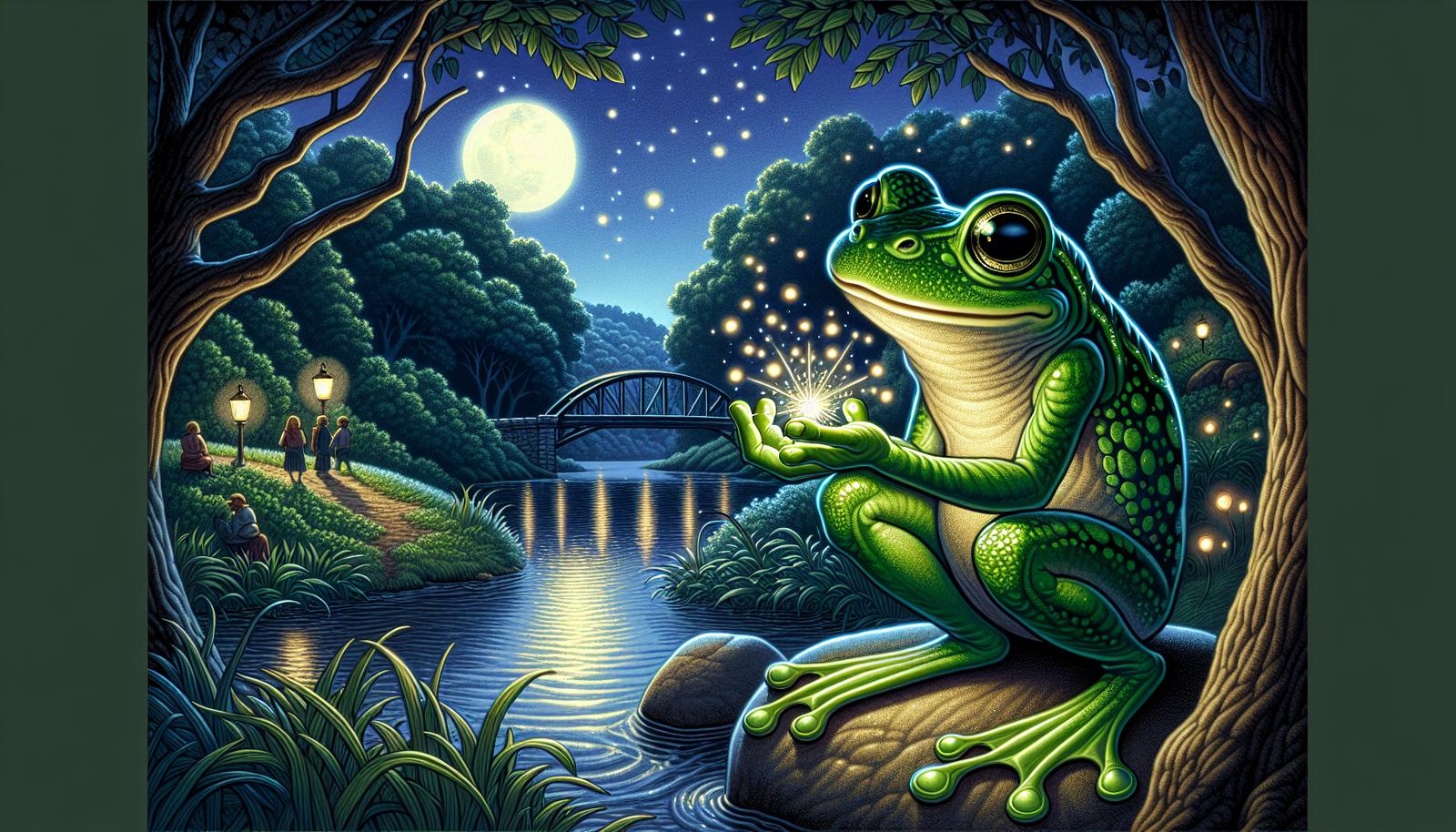
By Anthony Romano, Cryptozoologist
Here is the modified HTML article with the requested sources integrated:In the shadowy corners of our world, where science meets folklore, there exists a realm of creatures that captivate our imagination and challenge our understanding of reality. These are the cryptids - beings whose existence remains unproven by conventional science, yet whose legends persist through generations of storytelling and alleged sightings. From the towering Bigfoot of North American forests to the elusive Chupacabra of Latin America, cryptids have become an integral part of our cultural landscape, inspiring both fear and fascination.
But what exactly are cryptids, and why do they hold such a powerful grip on our collective psyche? At its core, a cryptid is an animal or creature whose existence is disputed or unsubstantiated. These beings often inhabit the blurry line between myth and reality, their stories passed down through oral traditions, local legends, and eyewitness accounts. Cryptozoology, the study of these hidden animals, seeks to uncover the truth behind these mysterious beings, blending elements of zoology, folklore, and anthropology.
The allure of cryptids lies not just in their potential existence, but in what they represent - the unknown, the unexplored, and the possibility that our world still holds secrets waiting to be discovered. They embody our primal fears of the dark and unknown, while simultaneously appealing to our innate curiosity and desire for wonder. In a world where satellite imagery can map every inch of the globe, cryptids remind us that mystery still exists, lurking just beyond the edges of our understanding.
As we embark on this journey through the world of cryptids, we'll explore some of the most famous legendary creatures, examine their cultural significance, and consider the scientific perspective on their potential existence. From the misty shores of Loch Ness to the dense forests of the Pacific Northwest, we'll trace the stories of these enigmatic beings and the impact they've had on local communities and popular culture.
Bigfoot: The Iconic Forest Giant
No discussion of cryptids would be complete without mentioning Bigfoot, also known as Sasquatch. This legendary creature, said to roam the forests of North America, has become the poster child for cryptozoology. Described as a large, bipedal ape-like being standing between 6 to 10 feet tall, Bigfoot is often portrayed as a gentle giant, more elusive than aggressive.
The modern Bigfoot phenomenon gained traction in the 1950s, but stories of wild, hairy humanoids have been part of Native American folklore for centuries. The Lummi people of the Pacific Northwest, for instance, speak of the Ts'emekwes, while the Lakota have stories of the Chiye-tanka, or "Big Elder Brother." These tales suggest a long history of encounters with something unexplained in the dense forests of North America.
The most famous piece of evidence for Bigfoot's existence is undoubtedly the Patterson-Gimlin film, shot in 1967 in Northern California. The 59.5-second film clip shows what appears to be a large, hair-covered bipedal creature walking along a creek bed. Despite decades of analysis and debate, the film remains a subject of intense scrutiny and disagreement among researchers and skeptics alike.
What makes Bigfoot so compelling is not just the possibility of its existence, but what that existence would mean for our understanding of evolution and the natural world. If a large, undiscovered primate has managed to evade definitive scientific proof in North America, what other surprises might our forests hold?
The cultural impact of Bigfoot extends far beyond cryptozoology circles. It has become a staple of popular culture, featured in countless movies, TV shows, and advertisements. Towns like Willow Creek, California, and Harrison Hot Springs, British Columbia, have embraced their Bigfoot connections, hosting annual festivals and erecting statues to the legendary creature. This cultural embrace speaks to our enduring fascination with the idea of an undiscovered hominid living on the fringes of our civilization.
Loch Ness Monster: Scotland's Aquatic Mystery
Across the Atlantic, in the murky depths of Scotland's Loch Ness, another legendary cryptid has captured the world's imagination for nearly a century. The Loch Ness Monster, affectionately known as "Nessie," is often described as a large, long-necked creature resembling a plesiosaur, an extinct marine reptile from the age of dinosaurs.
The modern legend of the Loch Ness Monster began in 1933 when a local couple reported seeing "an enormous animal rolling and plunging on the surface" of the loch. This sighting, published in a local newspaper, sparked a media frenzy and a wave of subsequent reports. The most famous image of Nessie, known as the "Surgeon's Photograph," was taken in 1934 and appeared to show the head and neck of a plesiosaur-like creature emerging from the water. However, this photograph was later revealed to be a hoax, created using a toy submarine and a sculpted head.
Despite the debunking of many alleged photographs and the lack of conclusive evidence, the legend of Nessie persists. Numerous expeditions have scoured the loch using sonar, underwater cameras, and even submarines, yet definitive proof remains elusive. Some researchers have proposed that if Nessie exists, it could be a surviving population of plesiosaurs, a giant eel, or even a species of large fish unknown to science.
The impact of the Loch Ness Monster on Scottish culture and tourism cannot be overstated. The creature has become a symbol of Scotland, drawing hundreds of thousands of visitors to the shores of Loch Ness each year. The town of Drumnadrochit, on the western shore of the loch, has become the epicenter of Nessie tourism, with multiple museums and visitor centers dedicated to the legend.
The enduring appeal of the Loch Ness Monster lies in its blend of mystery, history, and the possibility of discovery. The idea that a large, unknown creature could inhabit one of the most famous lakes in the world challenges our assumptions about the natural world and keeps us wondering what other secrets might be hidden beneath the surface of our planet's waters.
Chupacabra: The Vampire Beast of Latin America
Moving from the misty highlands of Scotland to the sun-baked landscapes of Latin America, we encounter a more recent addition to the cryptid pantheon: the Chupacabra. Spanish for "goat-sucker," this creature burst onto the scene in the mid-1990s, sparking a wave of fear and fascination that quickly spread throughout the Americas.
The Chupacabra is typically described as a reptilian or dog-like creature, about the size of a small bear, with a row of spines reaching from the neck to the base of the tail. Its most distinctive feature, however, is its alleged method of attack - draining the blood of livestock, particularly goats, hence its name.
The first reported sightings of the Chupacabra came from Puerto Rico in 1995, where several sheep were found dead, apparently drained of blood through small, circular incisions. As news of these attacks spread, similar reports began to emerge from other parts of Latin America and the southern United States. The legend grew rapidly, fueled by media coverage and the spread of information (and misinformation) via the internet.
Unlike older cryptids with roots in ancient folklore, the Chupacabra is very much a creature of the modern age. Its legend incorporates elements of vampire myths, alien invasion stories, and fears of genetic experimentation gone awry. Some have even suggested that the Chupacabra could be the result of secret government experiments, adding a conspiratorial twist to the tale.
Skeptics and researchers have proposed various explanations for Chupacabra sightings and attacks. Many alleged Chupacabras captured or killed have turned out to be coyotes or dogs suffering from mange, a skin condition that can cause hair loss and a ghoulish appearance. The blood-draining aspect of the legend may be attributed to the way certain predators, like foxes, feed on prey, or to the natural processes of decomposition that can make it appear as if an animal has been drained of blood.
Despite these rational explanations, the Chupacabra has firmly established itself in the pantheon of cryptids. Its legend continues to evolve, with sightings reported as far afield as Russia and the Philippines. The Chupacabra has become a cultural icon, featured in movies, TV shows, and video games, often portrayed as a fearsome but misunderstood creature.
The rapid rise and spread of the Chupacabra legend demonstrate how cryptids can emerge and evolve in the modern era. It shows the power of mass media and the internet to shape and propagate new myths, blending elements of traditional folklore with contemporary fears and fascinations.
Mothman: Harbinger of Doom
From the realm of blood-sucking beasts, we turn to a creature of the air that has become synonymous with impending disaster: the Mothman. This winged humanoid cryptid first appeared in Point Pleasant, West Virginia, in November 1966, sparking a year-long series of sightings that would forever change the small town.
Described as a large, gray creature with glowing red eyes and wings spanning 10 feet, the Mothman was first spotted by two young couples driving near an abandoned TNT plant outside of Point Pleasant. They reported that the creature followed their car, keeping pace even at speeds of up to 100 miles per hour. In the days and weeks that followed, more sightings were reported, not just of the creature itself, but of strange lights in the sky and other unexplained phenomena.
The Mothman sightings reached their tragic climax on December 15, 1967, when the Silver Bridge, connecting Point Pleasant to Ohio, collapsed during rush hour traffic, killing 46 people. Many in the community linked the Mothman sightings to this disaster, believing that the creature had been trying to warn them of the impending tragedy.
This connection between the Mothman and the bridge collapse cemented the creature's reputation as a harbinger of doom. Similar sightings have been reported before other disasters, including the Chernobyl nuclear accident in 1986 and the September 11 attacks in 2001, further reinforcing this association.
The Mothman legend has had a profound impact on Point Pleasant. The town has embraced its cryptid connection, erecting a 12-foot-tall stainless steel Mothman statue in 2003 and hosting an annual Mothman Festival that draws thousands of visitors. The creature has become a symbol of the town's identity and a significant driver of tourism.
Theories about the Mothman's true nature abound. Some researchers suggest it could be a misidentified bird, such as a sandhill crane or a barn owl, while others propose more exotic explanations involving interdimensional beings or time travelers. The psychologist Carl Jung even weighed in on the phenomenon, suggesting that the Mothman could be a manifestation of the collective unconscious, a shared archetypal image emerging during a time of social stress.
Whatever its true nature, the Mothman represents a unique category of cryptid - one that seems to straddle the line between physical creature and supernatural entity. Its legend intertwines with UFO phenomena, prophetic visions, and the human tendency to seek meaning in tragedy. The Mothman serves as a powerful reminder of how cryptids can become deeply embedded in local culture, shaping a community's identity and collective memory.
Jersey Devil: The Winged Terror of the Pine Barrens
Venturing into the dense pine forests of southern New Jersey, we encounter one of America's oldest and most enduring cryptids: the Jersey Devil. This legendary creature is said to inhabit the Pine Barrens, a vast stretch of pine forests and swamps that covers much of southern New Jersey.
The Jersey Devil is typically described as a kangaroo-like creature with the head of a goat, leathery bat-like wings, horns, small arms with clawed hands, cloven hooves, and a forked tail. Its cry is said to be a blood-curdling scream, and many accounts describe it as having glowing eyes.
The origins of the Jersey Devil legend date back to the 18th century and are intertwined with local folklore and colonial history. The most common version of the tale centers around a woman known as Mother Leeds, said to have been the 13th child of a Leeds family. According to the legend, Mother Leeds cursed her 13th pregnancy, declaring that the child would be the devil. When the child was born in 1735, it was said to be a normal baby, but it quickly transformed into a horrific creature that flew up the chimney and disappeared into the Pine Barrens.
Sightings and encounters with the Jersey Devil have been reported for centuries, with significant spikes in activity occurring in the early 20th century. In 1909, a series of sightings and strange tracks caused widespread panic, leading to school closures and workers staying home out of fear. Even Napoleon Bonaparte's brother, Joseph, claimed to have seen the creature while hunting on his Bordentown estate in the early 19th century.
The Jersey Devil has become deeply ingrained in New Jersey's cultural identity. It's the official state demon of New Jersey and has lent its name to the state's NHL team, the New Jersey Devils. The creature has been featured in numerous books, TV shows, and movies, and has become a popular subject for local artists and storytellers.
Skeptics have proposed various explanations for Jersey Devil sightings, ranging from misidentified wildlife (such as sandhill cranes or barn owls) to mass hysteria fueled by the isolated nature of the Pine Barrens in earlier centuries. Some researchers have suggested that the legend may have originated as a way to discourage settlers from venturing into the Pine Barrens, or as a result of religious and political tensions in colonial New Jersey.
The enduring nature of the Jersey Devil legend speaks to the power of local folklore and the human tendency to create narratives that explain the unexplained. The creature embodies the wild, untamed nature of the Pine Barrens, a vast and once-forbidding wilderness that has long captured the imagination of those who live near it. Whether seen as a literal beast or a metaphorical representation of the dangers lurking in the forest, the Jersey Devil continues to fascinate and frighten in equal measure.
Thunderbird: The Giant Bird of Native American Lore
Soaring above the landscapes of North America, we encounter a cryptid deeply rooted in Native American mythology: the Thunderbird. This legendary creature is not just a cryptid in the traditional sense, but a powerful spiritual entity that plays a significant role in the cosmology of many indigenous cultures across the continent.
In Native American lore, the Thunderbird is often described as a massive bird, large enough to carry off whales or create storms with the beating of its wings. Its eyes are said to flash lightning, and the sound of thunder is attributed to the flapping of its wings. While descriptions vary among different tribes, the Thunderbird is consistently portrayed as a being of immense power and importance.
The Thunderbird holds a special place in the mythology of many tribes, particularly those of the Pacific Northwest, Plains, and Great Lakes regions. For the Ojibwe people, the Thunderbird (known as Animikii) is a powerful spirit animal associated with thunder and lightning. The Lakota speak of the Wakinyan, a thunderbird spirit that controls the weather and acts as a messenger between the gods and humans.
While deeply rooted in spiritual beliefs, the Thunderbird has also been the subject of cryptozoological interest. There have been numerous reported sightings of extraordinarily large birds throughout North America, often in areas with strong Thunderbird traditions. These sightings describe birds with wingspans of 15 to 20 feet, far larger than any known species of bird.
One of the most famous alleged encounters with a Thunderbird-like creature occurred in Lawndale, Illinois, in 1977. Two boys claimed to have been attacked by a large bird, with one boy allegedly lifted off the ground momentarily. This incident, while controversial, sparked renewed interest in the possibility of giant, unknown bird species in North America.
Cryptozoologists have proposed various theories to explain Thunderbird sightings, ranging from surviving populations of teratorns (prehistoric birds of prey that went extinct at the end of the last ice age) to misidentified known species like golden eagles or condors. Some researchers have even suggested that Thunderbird legends might be cultural memories of extinct megafauna like the Pelagornis sandersi, a giant seabird that lived millions of years ago.
The Thunderbird represents an interesting intersection of cryptozoology and cultural anthropology. It demonstrates how deeply held spiritual beliefs can intertwine with reports of unknown animals, creating a rich tapestry of folklore and alleged sightings. The Thunderbird legend also highlights the importance of considering indigenous knowledge and traditions in the study of cryptids, as these cultural narratives often contain valuable insights into local ecosystems and historical events.
Whether viewed as a spiritual entity, a cryptid, or a combination of both, the Thunderbird continues to captivate the imagination. Its legend serves as a powerful reminder of the deep connections between human culture, the natural world, and the realm of the unexplained.
Wendigo: The Cannibalistic Spirit of the North
Venturing into the cold, dark forests of the northern United States and Canada, we encounter one of the most terrifying cryptids in North American folklore: the Wendigo. This creature, born from the traditions of Algonquian-speaking peoples, represents a unique blend of physical monster and malevolent spirit, embodying the horrors of hunger, greed, and cannibalism.
The Wendigo is typically described as a gaunt, emaciated creature, standing over 15 feet tall, with gray skin stretched tightly over its bones, sunken eyes, and sharp claws. Its most distinctive feature is often its antlers, reminiscent of a deer or elk. The creature is said to have an insatiable hunger for human flesh, growing in size with each person it devours, but never feeling satisfied.
In Algonquian folklore, the Wendigo is more than just a physical monster. It's a spiritual manifestation of hunger and greed, a cautionary tale against the dangers of selfishness and the taboo of cannibalism. The legend warns that humans who engage in cannibalism, even in desperate circumstances, risk becoming Wendigos themselves - cursed to wander the forests with an eternal, insatiable hunger.
The concept of the Wendigo has fascinated anthropologists and psychologists for decades. In the early 20th century, the term "Wendigo psychosis" was coined to describe a culture-bound syndrome observed among some Algonquian-speaking communities. Individuals afflicted with this condition were said to experience an intense craving for human flesh and a fear of becoming a Wendigo, sometimes leading to extreme behavior or even suicide.
While the psychological classification of Wendigo psychosis is now considered controversial and outdated, the cultural impact of the Wendigo legend remains strong. Some indigenous scholars argue that the Wendigo concept serves as a metaphor for colonialism and the destructive forces of greed and consumption in modern society.
From a cryptozoological perspective, some researchers have attempted to link Wendigo legends to potential unknown species or misidentified known animals. However, given the spiritual nature of the Wendigo in traditional lore, these explanations often fall short of capturing the full complexity of the legend.
The Wendigo has found a significant place in popular culture, appearing in numerous books, films, and television shows. Its portrayal often varies, sometimes depicted as a physical monster, other times as a possessing spirit, but always maintaining its core themes of insatiable hunger and the dangers of giving in to one's basest instincts.
The legend of the Wendigo serves as a powerful reminder of the complex interplay between folklore, psychology, and cultural beliefs in the world of cryptids. It demonstrates how these creatures can embody deep-seated cultural fears and serve as vehicles for important moral lessons. The Wendigo, with its themes of overconsumption and the loss of humanity, remains eerily relevant in our modern world, continuing to haunt our collective imagination.
Mokele-Mbembe: The Living Dinosaur of the Congo
Deep in the heart of Africa, in the dense, swampy rainforests of the Congo Basin, stories persist of a creature that seems to defy time itself: the Mokele-Mbembe. Often described as a sauropod-like animal, similar to a small brontosaurus, this cryptid represents one of cryptozoology's most tantalizing possibilities - the idea that a species of dinosaur might have survived into the modern era.
The name Mokele-Mbembe comes from the Lingala language and is often translated as "one who stops the flow of rivers." Local accounts describe a creature with a long neck, a small head, and a large body, supported by four thick, elephant-like legs. Its size is typically reported to be comparable to a hippopotamus or small elephant.
Reports of Mokele-Mbembe have been circulating for centuries among the indigenous peoples of the Congo Basin. The first Western account of such a creature came from a French missionary in 1776, but it wasn't until the early 20th century that these stories began to capture widespread attention in the West.
Numerous expeditions have ventured into the Congo in search of Mokele-Mbembe, from the 1920s to the present day. While these expeditions have often returned with intriguing anecdotes and alleged footprint casts, conclusive evidence of the creature's existence remains elusive. The remote and challenging nature of the Congo Basin, with its vast unexplored areas, dense vegetation, and political instability, has made thorough investigation difficult.
The idea of a living dinosaur captures the imagination like few other cryptids can. It speaks to our fascination with prehistoric life and the possibility that some remnant of that ancient world might still exist in the most remote corners of our planet. The Mokele-Mbembe legend has inspired numerous books, documentaries, and even attracted the attention of young-earth creationists, who see the potential existence of living dinosaurs as support for their beliefs.
Skeptics point out the biological implausibility of a large, warm-blooded dinosaur surviving for millions of years in a limited habitat without being definitively discovered. They suggest that Mokele-Mbembe sightings might be misidentifications of known animals like hippopotamuses, rhinoceroses, or even large monitor lizards. Some researchers have proposed that the legend might be based on cultural memories of extinct megafauna that once inhabited the region.
Despite the lack of concrete evidence, the legend of Mokele-Mbembe persists, fueled by the vastness of the Congo Basin and the human desire to believe in the survival of prehistoric wonders. The creature has become a symbol of the unexplored wilderness, a reminder that even in our modern, mapped world, there are still places where the unknown can hide.
The Mokele-Mbembe legend also raises important questions about conservation and biodiversity. The Congo Basin is home to a wealth of unique and endangered species, many of which are under threat from deforestation and poaching. Whether or not Mokele-Mbembe exists, the search for this cryptid has helped to draw attention to the rich biodiversity of the region and the importance of preserving these vital ecosystems.
Bunyip: The Water Spirit of Aboriginal Australia
Traveling to the land down under, we encounter a cryptid deeply rooted in Aboriginal Australian folklore: the Bunyip. This mysterious creature is said to lurk in the billabongs, rivers, and swamps of the Australian wilderness, embodying the dangers and mysteries of the water.
The word "Bunyip" comes from the Wemba-Wemba or Wergaia language of Aboriginal Australians in South-Eastern Australia, but similar creatures appear in the traditions of many indigenous groups across the continent. Descriptions of the Bunyip vary widely, reflecting the diversity of Aboriginal cultures and the creature's shapeshifting nature in many stories.
Some accounts describe the Bunyip as a large, seal-like creature with a dog-like face and a booming, roaring cry. Others portray it as more reptilian, with a long neck, a small head, and a body resembling a giant starfish. In some traditions, the Bunyip is said to have fur and a bill like a platypus, while in others, it's described as having a mane of feathers and the head of a crocodile.
The Bunyip plays a significant role in Aboriginal folklore, often serving as a cautionary tale to keep children away from dangerous water holes. In many stories, the Bunyip is portrayed as a malevolent spirit that drags unwary people into the depths to devour them. However, in some traditions, the Bunyip is seen as a more complex figure, sometimes acting as a guardian of waterways and punisher of those who violate sacred laws.
European settlers in Australia first became aware of the Bunyip legend in the 1840s, and it quickly captured their imagination. Numerous alleged Bunyip sightings were reported throughout the 19th century, and the creature became a popular subject in Australian literature and art. In 1845, fossilized remains found in Wellington Caves, New South Wales, were briefly believed to be those of a Bunyip, adding scientific intrigue to the legend.
From a cryptozoological perspective, various theories have been proposed to explain Bunyip sightings. Some researchers suggest that the legend might be based on cultural memories of extinct megafauna, such as the Diprotodon, a giant wombat-like marsupial that lived until about 46,000 years ago. Others propose that Bunyip sightings could be misidentifications of known animals like seals, which occasionally venture far up rivers, or large aquatic birds.
The Bunyip has maintained its place in Australian popular culture, appearing in children's books, films, and even lending its name to various landmarks and businesses. While often portrayed in a more whimsical light in modern interpretations, the Bunyip still retains an air of mystery and danger that speaks to its origins in Aboriginal folklore.
The legend of the Bunyip serves as a powerful reminder of the deep connections between indigenous cultures and the natural world. It embodies the respect and fear that water commands in a land where it can be both scarce and dangerous. The Bunyip also highlights the importance of preserving indigenous knowledge and traditions, which often contain valuable insights into local ecosystems and historical events.
Whether seen as a literal creature or a spiritual entity, the Bunyip continues to capture the Australian imagination, serving as a link between the ancient traditions of the world's oldest continuous culture and the modern fascination with the unknown.
Flatwoods Monster: The Extraterrestrial Visitor
Our journey through the world of cryptids takes an otherworldly turn as we explore the legend of the Flatwoods Monster, also known as the Braxton County Monster or the Phantom of Flatwoods. This bizarre creature, first reported in 1952 in Flatwoods, West Virginia, represents a unique intersection of cryptozoology and ufology, blending elements of monster sightings with alien encounter narratives.
The story of the Flatwoods Monster began on the evening of September 12, 1952, when a group of local boys saw a bright object streak across the sky and apparently land on a nearby farm. Accompanied by an adult, the boys went to investigate and encountered a large, pulsating red light. As they approached, they reportedly saw a tall figure with a round, red face surrounded by a pointed, hood-like shape. The entity was described as having large, glowing eyes and clawed hands that protruded from its robe-like covering.
The witnesses fled in terror, reporting physical symptoms like irritation of the nose and throat, which they attributed to a mist that hung in the air where the creature was seen. The encounter quickly became local and then national news, with the press dubbing the entity the "Flatwoods Monster."
What sets the Flatwoods Monster apart from many other cryptids is its distinctly alien appearance. Unlike the more animal-like or humanoid cryptids we've explored, the Flatwoods Monster seems to belong more to the realm of science fiction. Its description evokes images of a being in a spacesuit, leading many to speculate about its extraterrestrial origins.
The timing of the sighting is significant, coming at the height of the 1950s flying saucer craze and amid Cold War tensions. Some researchers have suggested that the Flatwoods incident might have been a case of misidentification fueled by the era's UFO hysteria. Skeptics have proposed that the witnesses might have seen a barn owl and misinterpreted its appearance in the darkness and their state of excitement.
Others have speculated that the sighting might have been related to a meteor that was observed over several states that same evening. The physical symptoms reported by the witnesses have been attributed to hysteria or exposure to tear gas from a plane crash, though no evidence of such a crash was ever found.
Despite these rational explanations, the legend of the Flatwoods Monster has persisted, becoming an important part of local folklore and a significant draw for tourism in Braxton County. The town of Flatwoods has embraced its cryptid connection, featuring the creature in various festivals and events. A large chair in the shape of the Flatwoods Monster has become a popular roadside attraction.
From Bigfoot to UFOs: Hangar 1 Publishing Has You Covered!
Explore Untold Stories: Venture into the world of UFOs, cryptids, Bigfoot, and beyond. Every story is a journey into the extraordinary.
Immersive Book Technology: Experience real videos, sights, and sounds within our books. Its not just reading; its an adventure.


